Gut Bugs: Intestinal Friends and Foes
This week a top to bottom tour of the intestine. Why we need more dirt in our diet, how to avoid food poisoning, and how to treat IBS - irritable bowel syndrome. Plus, why the prospects of finding life in outer space just got a lot larger, and evidence that touchscreen devices are affecting the sleep of children...
In this episode

00:52 - Probing an exoplanet atmosphere
Probing an exoplanet atmosphere
with Dr John Southworth, Keele University
The quest to find planets in orbit around distant stars that resemble the Earth and could be habitable has been going on for decades. But most of the early candidates were what we call “hot Jupiters” - these are massive gas giant planets orbiting close to the parent star and are in no way capable of supporting life. Techniques and technology are improving rapidly though and are now sufficiently good that we can spot much tinier worlds and even analyse their atmospheres. Chris Smith spoke to John Southworth from Keele University, who has recently done this for a star about 40 light years away...
John - The star is GJ1132 and the planet is GJ1132b, and we’ve discovered an atmosphere around this planet which makes it the first detection of an atmosphere around what we think is a rocky planet outside our own solar system.
Chris - Why is that a big milestone?
John - It’s big because there’s an awful lot of these things. The Milky Way contains about 150 billion stars; the very, very low mass stars would be the dominant component of that.
Chris - If there are lots of them and there are planets around them, that means there are, potentially, lots of rocky worlds a bit like the Earth out there?
John - Yes, that could be the most common thing in the universe.
Chris - You’ve been studying the planet which is going round this star. Tell us about that planet then.
John - Well, the planet's small. We think it’s probably rocky. It’s going round its host star every 1.6 days so it’s really close in to the host star. But, because the star is cold and small, then the planet itself is not particularly hot.
Chris - And how hot is not particularly hot?
John - It’s 370 degrees Celsius on the surface.
Chris - And you can actually physically see this planet, or can you see its effect on the host star?
John - What we see is it pass in front of its host star once per orbit. So, every 1.6 days, the star gets a little bit fainter because the planet’s blacking out some of the surface. Now, importantly, this dip in brightness actually tells you how big the planet is relative to the star, so you get a direct measurement of the size of this planet, which is not possible to do in any other way.
Chris - Can you weigh the planet: by looking at how fast it’s going round, and how big it is, you can work out basically what it must be made of and its mass?
John - Yes. We can weigh the planet by measuring how the speed of the star changes. Because, whilst the planet is orbiting the star, the star itself is actually going round in an orbit pulled by the planet and so it actually changes its speed continually, and if we measure how much that speed changes, then we can measure the mass of the planet as well.
Chris - How much does the planet weigh?
John - Around about 1.6 times the mass of Earth. Our results are consistent with it being rocky, but also it could be entirely water.
Chris - Oh, so you have a waterworld?
John - Yes. Both these options can fit the data.
Chris - What about the atmosphere that you’re saying you can also see; how are you looking at that?
John - I mentioned that when the planet goes in front of the star it gets a little dip in brightness, which allows you to measure the size of the planet. Now what we did was to measure this change in brightness at seven different wavelengths - four in the optical and three in the near infrared. And we found that at one wavelength, which is just a little bit too red for the human eye to see, we found that the planet appears to be bigger. So our interpretation of this is that the planet has quite a large atmosphere, which is letting through light at most wavelengths, but at this near infrared wavelength it’s actually opaque and it’s sufficiently big that it makes the planet itself look bigger. Now if you try to make some theoretical models of the planet’s atmosphere, then you can get this effect by using atmospheres with either steam or methane, or a combination of the two.
Chris - Right. And you can’t tell at the moment which of the two it is?
John - No. At present our data could be entirely satisfied by either of those two things, or a combination. So the obvious next step then is to get some better data and try and work out whether it’s methane or water. Three weeks ago now I sat down to write an application to get some data from a big telescope - the very large telescope (VLT) - in Chile. I was half an hour into the application process writing the science case, and I thought I’d best check that no-one else has done this first. I checked the archive and it turns out that my colleagues in Exeter have actually observed this star and this planet with a very large telescope so, hopefully, within a few months we may get some more information about this planet.
Chris - That must be like an Egyptologist thinking they’ve walked in on the tomb of Tutankhamun and then discovering their mates had been there first?
John - Yes, but the planet was publically announced back in 2015, so we both had the chance to have a go at it. In fact, I think we may have been observing the same transits from different telescopes in the same country without even knowing it!
Chris - They would get, by using a much bigger telescope, better resolution of data then, will they?
John - Yes, better wavelength resolution which will, hopefully, enable them to work out whether it’s methane or water, and possibly find out other interesting things about the atmosphere.
Chris - What are the implications of what you’ve found?
John - Well, if you look at very low mass stars, they tend to form with a lot of magnetic fields which, in turn, causes an awful lot of X-ray emission and ultraviolet light. We think that this blows off quite a lot of the atmospheres of low mass planets near them. What we have shown here is that an Earth-like planet can survive for billions of years with this kind of radiation coming in and still retain an atmosphere. Now we know that there’s a lot of these planets in the galaxy and, therefore, that means that there can be an awful lot of planets with an atmosphere. Many of these will actually have the right temperature on their surface to support life, so the implication here is that life could be a lot more common than we thought...
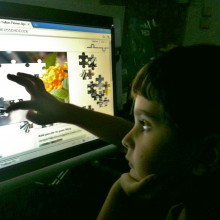
06:36 - Touchscreens disrupting sleep in children
Touchscreens disrupting sleep in children
with Dr Tim Smith, Birkbeck University of London
One of the most dramatic changes over the last decade has been the explosion of touchscreen devices in our homes, from tablets and smartphones right through to laptops and electronic books. And while they are bringing us enormous convenience and entertainment, a worrying trend is emerging: these devices are also affecting our sleep - particularly where children are concerned. A new study from Birkbeck University of London has found that up to 75% of the children they looked at used touchscreens on a daily basis, and there were knock-on effects. Katie Haylor spoke to study author Tim Smith.
Tim - We asked parents to complete an online questionnaire where they documented the media environment of their household. How many hours a day their child used touchscreen devices. As well as some standard questionnaires on sleep, general developmental milestones like walking and language as well as some other standard questionnaires.
Katie - What did you find?
Tim - From those questionnaires we were able to identify an association between the amount of time that the children spent using the touchscreens per day and their sleep behaviour. We found that the longer the children used a touchscreen device the less time they spent sleeping at night, and the longer it took them to fall asleep. Even when we controlled for known factors that might confound the effect like that age of the child, and even the exposure to other screens like TVs.
Katie - It feels great to get a good night’s sleep but why is it so important?
Tim - Sleep is really critical for our health and wellbeing. It allows us the rest to recover from the day, it allows us to purge our body of toxins and prepare for the rigours of the next day. It is also very critical for neural developments and memory consolidation and learning, and allows us to make stronger long term memories based on the experiences of the day and this is even amplified when we talk about young children. Infants spend most of their day asleep and there’s a lot of development, a lot of physical and mental change happening, so anything that can impact sleep may have long term consequences on their development.
Katie - So what does this mean? Should parents be controlling the amount of time their kids spend with touchscreen devices?
Tim - Right now we don't have any actual evidence of the consequence of this change in sleep on development and we need to do follow-on studies to be able to identify that. But there are guidelines out there which are based on more traditional screen media like TVs that have shown negative consequences of excessive screen time. And they generally recommend to limit the amount of time that children spend on screens per day, and specifically protect parts of the day which might be critical like the hours before bedtime to make sure that the children don’t have screen exposure and can prepare themselves for sleep.

09:40 - Sieving water out of air
Sieving water out of air
with Professor Evelyn Wang, MIT
Two thirds of the world’s population are experiencing water shortages, despite an estimated 13 trillion litres of water hovering around us in the atmosphere. But is there a cheap and effective way to get hold of it? MIT’s Evelyn Wang thinks so, and she’s developed a device based on clever molecular sieves - called metal organic frameworks or MOFs - to do it. Izzie Clarke heard how it works.
Evelyn - Our device allows us to capture water from air, and the way it does it is using this special material a metal organic framework that acts like a sponge, absorbs a lot of this water into the pores of the material, and then releases it when we apply a small amount of heat using the sun.
Izzie - How does that metal organic framework actually capture the water?
Evelyn - It is a device that is basically a box that opens up and so exposes this metal organic framework to the environment. The metal organic framework can capture even very small amounts of water in the air down to humidity ranges of about 20%, which are in these very arid conditions such as desert areas where there is a significant shortage of water. Then it’s being able to get the water out of the material and to make it into the liquid form.
Izzie - So how do you do that?
Evelyn - We close the door of the device, and so now the material’s confined such that we can heat up the material and then releases the vapour into this local environment that is very humid. Because we’re releasing more of the water vapour into this box and then we can now easily condense it using a condenser from the vapour to the liquid form.
Izzie - How is that being powered; it sounds quite energy consuming?
Evelyn - It’s a completely passive process, and because the material is tailored in a way to allow for easy release of the water at relatively low temperatures, we can use the sunlight. Then in the condensation process itself, it’s also passive because we’ve created this local high relative humidity environments such that the condensation temperature can be near to ambient.
Izzie - How much water can this metal organic framework capture and produce?
Evelyn - This particular MOF 801 can capture about 25% of its weight in water. Right now we anticipate, even with this amount of water capture, we can achieve a device that’s about 30 litres in size or so - about the size of a carryon suitcase, maybe a little bit smaller than that, which can deliver about 12-15 litres of drinking water each day.
Izzie - So what does that mean for environments that are suffering severe drought and water loss?
Evelyn - We think that this can be an important technology to be able to now address problems in those regions where there really isn’t a lot of infrastructure other than the Sun, and often they’re in a very arid climates. So we hope that we can start to deploy this technology to those regions to really be able to give all these people clean drinking water. Right now we’ve demonstrated a single layer of this metal organic framework in this prototype where we want to start now to integrate a few stacks of these layers such that it can produce more significant amounts of water. The second is working with collaborators who have really been the experts in the chemistry and in the development of the materials is being able to now scale up these materials, such that we can have larger quantities of them to be able to them mass produce many devices.
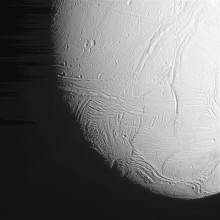
13:32 - Saturn's moon could support life
Saturn's moon could support life
with Professor David Rothery, Open University
In our own cosmic backyard is Enceladus, a small moon which, as it orbits Saturn, gets buckled by gravitational forces. This generates heat maintaining a liquid ocean inside the moon that periodically sprays jets of salty ice into space. By looking at what those plumes are made of, scientists have concluded that the inside of Enceladus could have all the right ingredients for life. Chris Smith spoke to Open University planetary geologist David Rothery about the findings...
David - Enceladus is a 502 kilometer diameter moon of Saturn. So it’s an icy body, ice covered surface, we think some rock inside, and we’re pretty convinced that there’s an internal ocean. The ice surface and the interior rock are disconnected by this zone of liquid water and there must be some tidal heating going on. There are plumes being erupted through cracks in the ice near Enceladus’ south pole, which were discovered when the Cassini spacecraft got to Saturn twelve years ago now and have been studied ever since by multiple fly throughs and so on.
The evidence has been building up, and up, and up about what’s going on in the ocean and, in particular, the interaction between the water and the warm rock at the bottom of the ocean. That’s what’s got people excited because the last bits of evidence have slotted into place that the water and the rock are reacting chemically and producing conditions down there on the ocean floor that would be habitable by the right kind of microbes.
Chris - First of all: how are these plumes being monitored?
David - We have a spacecraft orbiting Saturn called Cassini, which will crash into Saturn this September, but it’s had a dozen or so flythroughs of the plume. It wasn’t designed to fly through plumes but once they discovered the plumes they said “OK, we’ve got to fly through these and see what they are.” So the retasked the mass spectrometer to analyse what’s in the plumes and sure enough, pretty early on, they found there’s water there. Then they found ammonia and methane and carbon dioxide and, two or three years ago, they found tiny little rock particles, little silica particles about 20 nanometres across.
They said what’s happening here to get these tiny little nanoparticles of silica, there must be chemical reactions going on with the rock? If that’s happening, it’s a reaction called serpentinisation, you make a mineral serpentine. If that happens you should be liberating hydrogen gas. If there’s hydrogen gas being produced down there, then we’ve got a metabolic pathway. There are microbes on the Earth’s ocean floor called archaea that can munch on rocks provided there’s hydrogen that they can use as well, and they can make their body mass out of that and extract energy from this, but the hydrogen had never been discovered.
So on the final flythrough in October 2015, they retasked their mass spectrometer in a special mode and it took them 18 months to get the results published which have said there is hydrogen there. Everybody’s convinced that the hydrogen is real that proves the metabolic pathway is viable. You could take microbes from Earth, stuff them down at the bottom of the ocean, and they’d be quite happy there.
Chris - Is there any other rational explanation for why this hydrogen could be there?
David - You can get hydrogen by a little bit of radioactivity can break water apart, but it seems it can’t produce hydrogen at the necessary rate.
Chris - Does this mean then that given it is the end of Cassini this year, and our opportunity to study this further is now effectively at an end that we need to push up the agenda for the European Space Agency, also other space agencies around the world, new missions like Cassini and focus on Enceladus? Is that where the money should go?
David - Well, you're right. There’s now more information to come about Enceladus from Cassini. Enceladus isn’t the only place to study; there’s Europa, a big icy moon of Jupiter. Bigger than Enceladus, and plumes haven’t been seen by a spacecraft around Europa, but you can see them by the Hubble space telescope. So there are spacecraft heading to Jupiter: there’s the European Space Agency mission called Deuce, there’s the Europa Clipper funded by NASA, going to Jupiter to study Europa and the other moons.
But Enceladus should also have a mission; there’s one called the Enceladus Life Finder or ELF, which is a lovely name which was proposed in a recent round to NASA not funded. NASA’s funding two asteroid missions this round but I suspect that ELF will come back next next year and perhaps will get funded because Enceladus really is a high priority target. So Enceladus and Europa, either of those are places to go. And if we can nail down the fact that life does exist there that ought to change our outlook on life in the universe. Because if it’s in these other places it will be all over the place around other stars too.
Chris - Presumably it must focus minds in terms of being extraordinary careful about contamination?
David - Yes. We certainly don’t want to accidently seed anywhere with earth life. This why at the end of the life of Cassini it is being crashed into Saturn. It will burn up in Saturn’s atmosphere and no bugs, which have accidentally hitched a ride from Earth and have survived 20 years in space, will get down to anywhere habitable. Space agencies are careful. They have to be by international treaty not to accidently take Earth microbes anywhere where they could survive.
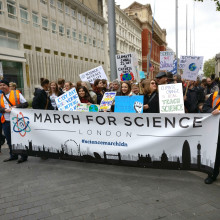
19:19 - Marching for science
Marching for science
with Robin Ince, Dr Andrew Steele - Science is Vital, Dr Suze Kundu - University of Surrey
22nd April 2017 was Earth Day and saw thousands across the world join the March for Science. There were 5 marches across the UK, with the biggest taking place in London. Crowds gathered outside the Science Museum and marched towards Westminster’s Parliament Square. Izzie Clarke spoke to Robin Ince, Andrew Steele from Science is Vital and Suze Kundu from the University of Surrey.
Science not silence! Science not silence! Science not silence!
Izzie - On Saturday 22nd April thousands of scientists and science supporters took to the streets in over 500 locations across the world to join the march for science. Created as a celebration of progress, and a call for governments to encourage research, five marches took place in the UK in Bristol, Edinburgh, Norfolk, Manchester, and London. I’m Izzie Clarke, and I spoke to comedian and science broadcaster Robin Ince, one of the speakers at the London march, about why this international movement was taking place?
Robin - The idea of having to stress the importance of science communication, the importance of politicians understanding contemporary science, and the fact that they need to keep open dialogues with scientist. But also, that there some fears with the Scientists for EU movement that when we leave the European Union we will possibly be burning some of our bridges with our scientific community in Europe and the importance of reminding people we must not do that.
Science is something that is an international movement; it does not have to fenced in by national boundaries. In fact, it’s very important that it’s not fenced in by national boundaries. That is one of the beautiful things about CERN. CERN was about bringing together scientists from across the world and working in unison on something positive.
Izzie - This is taking place all over the world. It’s very much an international march. Why now?
Robin - My sense is that over the last couple of years there has been in the mainstream an appearance that perhaps ideas of tolerance, ideas of curiosity, and ideas of moving forward with knowledge, perhaps need greater defending than we’d imagined. There seems to be sense that there’s a retrograde step going on in terms of us as human beings, and I think it’s to remind people that we need to keep moving forward and we cannot be complacent. I think we're beginning to see amongst people, including everyone here, it’s very easy to become complacent because we’ve had comfortable lives. Comfortable lives much of that powered by science and technology.
Izzie - One campaign group that aims to provide a voice for scientists is the organisation Science is Vital. Their Chair, computational biologist Dr Andrew Steele, explained what they do and why scientists are concerned about funding…
Andrew - Science is Vital kicked off back in about 2010 with a protest outside the Treasury protesting the government's threatened spending cuts for science funding. Since then we’ve carried on reacting to various bits of news and protesting, mainly about science funding, but also about other wider issues in science and trying to provide a grassroots voice for scientists and supporters of science.
Izzie - With funding being cut, is that quite a common occurrence at the moment?
Andrew - Science funding’s in a very funny place right now. The government are very keen to make the right noises about science. But if you look at what’s actually happened to science funding in the last five or ten years then basically, since the last government took power, it’s been a bit of a downward direction.
In the Autumn Statement the Chancellor, George Osborne, did announce an extra 2 billion pounds for science. But there’s a lot of uncertainty about firstly how that money’s going to get spent and secondly, whether the whole things just going to be cancelled out by Brexit.
Izzie - The lack of funding, is that just related to researchers or does that extend to the public?
Andrew - European funding extends to all kinds of different areas. Things like agricultural subsidies, and some regional development money for places like Cornwall and Wales are funded from the E.U., but it makes a huge, huge difference to scientific research. About 10% of the UK’s total public spending on our R and D comes from the E.U. and that can definitely affect everybody lives. Research look at things like answers to question in health, answers to how we can generate our energy sustainably into the future. So even if it were only to hit research, that would definitely have huge impacts across the U.K.
Izzie - Why do you think marches like today are important?
Andrew - I think the most important thing about today’s march for science is it provides a focal point. We marched back in 2010 and scientist haven’t marched in the intervening seven years. I think the problem is we just don’t like getting angry but there’s room for some evidence based anger here. We’ve got a tax on science from members of the government in countries all across the world. We’ve got funding being threatened or funding being cut in different places, and I think this just provides the opportunity, a flash point, for scientists and science lovers to come together and be a political voice.
I’m marching because climate change is real.
I’m marching because science isn’t being taken with the kind of respect that it should be.
Because evidence based veterinary medicine is very important.
I’m marching because science is the best way we have of understanding the universe, and I think that we should understand the universe.
I’m marching because alternate facts aren’t peer reviewed.
I’m marching for evidenced based policy making.
Izzie - Whatever the reason, thousands of people turned up across the world to show their support for science. At the end of the day in London, I caught up with guest speaker, Dr Suze Kundu, to talk about how the march affects the general public…
Suze - The majority of this crowd that were here today were made up of scientists, or what I like to call the sci curious people - the people that are already engaged with science. Really what we need to be doing is breaking out of our little bubble and actually engaging with the rest of the public and, hopefully, if people have seen the friendly side of science, and the approachable side of side, and the normal side of science, because ultimately we’re just people too, hopefully they’ll feel more empowered to want to engage with us. So I think this is the first of many things but we need to maintain that, and I think everybody just needs to act on the positivity of today.
Izzie - What would you like to achieve from today?
Suze - One of the things I mentioned in my speech earlier was the fact that we need each and every one of us here today ideally would speak to somebody that wasn’t here today. To speak to them and tell them about why they came here, and what they found out from people, and what we can do. Because, ultimately, over there in parliament, people that are making decisions are making them on behalf of everyone. So people that are funding our research need to take a bit of ownership of that and feel proud in taking some ownership in the science that goes on in this country and abroad as well. Because it’s for them, it’s paid for by them, we want them involved, and we really feel they should be involved.
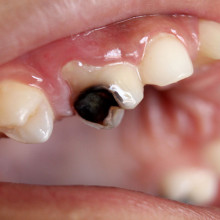
26:23 - What is tooth decay?
What is tooth decay?
with Dr Chris Vernazza, Newcastle University
You might not think of the mouth as being part of the gut, but the long, hollow tube that is the digestive system starts here. Food, drink (and, rumour has it, the occasional spider) go in and digestion begins, powered by your saliva and your teeth that turn big chunks of food into bite-sized morsels that are easier to swallow. But, as many people have been made all too painfully aware, our teeth can decay and according to the most recent Children's Dental Health Survey, almost 50% of 15 year olds have evidence of tooth decay. But why, and what can we do about it? Kat Arney speaks to Chris Vernazza, paediatric dentist and co-author of the survey...
Chris - We need a few different ingredients for tooth decay to actually happen and, maybe, the principle one of those is the bacteria that live in your mouth. The mouth’s home to billions of bacteria and all sorts of different species as well. We think there are about 500 to 700 different species, but it’s when these all get out of balance with each other that actually the decay starts.
Kat - What is the decay? How do the bacteria make our teeth break down? What goes on there?
Chris - The bacteria, if you like, feed on sugar, which is what people will commonly recognise as the major ingredient of decay. And as they feed on that sugar they metabolise it and produce acid as a waste product and excret that out of their cells. It’s the acid that’s actually attacking the hard bits of the teeth (the enamel) that leads to them dissolving away and creating holes in the teeth.
Kat - So it’s the acid created by the bugs that breaks down the structure of our teeth. You’ve said that it’s the sugar that the bugs are feeding on that’s doing this so is that presumably just things like sweets - where does this sugar come from?
Chris - We’re really interested in what we call free sugars and that would classically be things like sweets, cakes, puddings. They’re the very obvious ones that people think about and, increasingly people are also thinking about drinks as well. Sugary drinks have been much featured in the news of late as a major problem for obesity, but are also a major problem for tooth decay.
But there are other forms of free sugars that are more hidden away and so that might be things like honey, which people might think of as quite healthy but, actually, is very bad for teeth. Dried fruits, because they’ve dried the sugar that’s naturally bound up in the cells and isn’t really available for bacteria to make decay from actually begins to get released, so dried fruits are particularly bad. And fruit juice is as well and can be quite problematic because, again, the fruits been blitzed and the sugar’s been released from the cells.
Kat - But these are all things that are meant to be super healthy for us.
Chris - Yeah, absolutely. And that’s a bit of a problem for us because often people will turn to those as a healthy alternative but, actually, they’re damaging the teeth quite badly.
Kat - So what should we do? Because I’d be the first to admit that I do love sweeties but I also like fruit and I like fruit juices, and dried fruit, and honey, and things like that. What should I do, should I just stop eating them; that would make my life miserable? How do I protect my teeth?
Chris - In an ideal world we would like everyone to stop eating them but that’s probably not a reasonable way of doing things. So, as well as the amount of sugar that you eat, the really important thing is how often you eat them. Every time you eat some sugar, the bacteria produces acid for about half an hour afterwards. The saliva actually brings the acidic environment back to a normal environment, so it takes about half an hour for that to happen. So you can imagine, if you're having a sugary intake every half hour, your teeth are constantly under attack. Whereas, if you reduce the number of intakes, then there’s going to be a safe period between each where your teeth can begin to remineralise and grow back again, if you like.
Kat - So, that would argue for just eating your sweets or sweet stuff at once, or only a few points during the day rather than constantly dipping into your pockets and snacking?
Chris - Absolutely! One of the common things we advise our patients is if they can have sweet things with their meals then we know that the teeth are only going to be attacked at meal times, and sticking to non-sugary things between meals.
Kat - What about things like tooth brushing, because we’re all brought up to brush our teeth in the morning and at night and do things like flossing, and all that sort of thing? What should we be doing there?
Chris - As I’ve said, the decay happens when the bacteria get out of balance. There are lots of naturally living bacteria in the mouth and the bacteria grow in these communities that we call plaque - the furry stuff that sticks to your teeth. As the plaque gets more and more mature, the bacteria begin to select out themselves as the ones that are going to cause more decay. So, if we can disrupt that plaque by removing it, then that will be very beneficial in preventing decay, which is why brushing is so important, and flossing to get between the teeth.
Our recommendations are to brush twice a day with a fluoride-containing toothpaste. The fluoride's really good at preventing decay, both because it stops the bacteria producing as much acid but it also means the teeth become harder and less susceptible to the acid. So, brushing twice a day with a fluoride toothpaste is the key there.
Kat - Very briefly, we’ve mentioned this report that shows that almost 50% of 15 year olds have tooth decay which, obviously, is not great and later in life they could be losing their teeth. But is there a trend here - are the nation’s teeth getting better are are we just descending into horrible teeth forever?
Chris - No. Things have actually got quite considerably better over the last forty years, and a lot of that has been driven by the addition of fluoride toothpaste. So, if we look at the 15 year olds when we first did the survey in 1973, 97% of 15 year olds had some kind of cavity, which was a shocking figure, and that’s gone down to 42% in 2013.
So we have some big improvements, but I think the fact that we’re still sitting just below half of 15 year olds with some kind of cavities, or having had experience of them is really quick shocking when it’s a completely preventable disease.
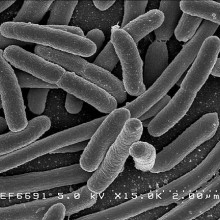
33:17 - Friendly bacteria: the microbiome
Friendly bacteria: the microbiome
with Professor Tim Spector, Kings' College London
Once food has passed through the mouth, it travels down the oesophagus and then the stomach where food is further digested by acid and enzymes; it’s then released slowly into the small and then the large intestines, which together form a 7 metre-long tube where nutrients and then water get absorbed into the bloodstream. But that’s not all the intestines do, because in recent years we’ve realised that they also provide a home for an additional previously unrecognised organ that weighs more than your brain and it also plays a huge role in keeping you healthy. Guessed what it is yet? Well that organ is your microbiome, the collection of microorganisms that live inside you. Chris Smith spoke to Kings’ College London scientist Tim Spector, who studies the microbiome.
Tim - It’s a community of microbes that inhabit our bodies and 99% of them are actually in our lower intestine, the colon. There are a 100 trillion of them, most of them are bacteria. As well as those, there are five times as many viruses, there are also fungi, and other little parasites as well. Together these 100 trillion microbes weigh several kilograms and one way of looking at them is not as a disparate group of bugs but, actually, as a newly discovered organ in our bodies because they weigh pretty much the same as a large spleen or your brain. And we’re just discovering how many different things they can do and how they help us survive.
Chris - How did they get there in the first place Tim?
Tim - The way they inhabit us starts as birth because we are pretty much born sterile and we get our first microbes through the birth canal. These microbes get down into the infant’s guts and start proliferating, which allows you then to go on and develop normally and have a normal immune system and a defence system.
Chris - And this is a community of lots of different types of bacteria which we pick up from the environment, some of which suit us, some of which don’t, some of which therefore thrive, and some of which don’t. So we end up a bit like a meadow with lots of different flowers and grasses in it and that’s our microbiome?
Tim - Yes, I think the garden analogy is exactly that and, not forgetting just the meadow on top, it’s also the soil underneath, the mixture of fungi and microbes. A good, healthy microbiome community is one that is extremely diverse, has lots of different species all working together so that no one group takes over. Every little grain of nutrient is used and every byproduct of every microbe goes to another microbe, and so nothing’s left to waste.
These guys are constantly producing things for the human body we didn’t think were possible. Because, as well as having the same number of cells as the average human, they have two or three hundred more genes than we do that not only help us digest complex carbohydrates, which we couldn’t otherwise eat or get nourishment from, they are also key messengers for our immune systems. They also produce a third of our vitamins, and brain chemicals so they can influence our mood and even our appetite.
Chris - Now you said that they get there by the birth process, but not everyone’s born the same way, and not everyone’s breast fed. So what are the influences of not having a normal vaginal delivery or not being breast fed? Does that change the spectrum of bugs?
Tim - We’re only just finding out the real issues here of this epidemic of cesarean sections, which currently is about 23% of the UK, but many parts of the world it’s over 50%. There were thought to be no downsides, but we do know that the microbes of the first three years of a baby born by cesarean section are very different to that provided by the normal birthing process. It turns out that this isn’t particularly healthy for them and there’s a slightly increased rate of obesity and allergies in children born to cesarean sections. It’s something we didn’t really think about at all before, we just thought it was a routine operation and would have no consequences.
Chris - Now that’s babies having the wrong bugs from birth, but what about adults? Are there any examples of adults where the spectrum of bugs in the gut goes off kilter and that’s linked to adult diseases?
Tim - If you take a group of people with a diseases or disorder and compare them with healthy controls, there’s one consistent finding in all of these studies is that the diseased people have less diversity of microbes.
Chris - Is that because they’re taking drugs for their disease or they’ve got their disease and that’s influencing the environment these bugs are asked to thrive in, or did the bugs change and that caused the disease?
Tim - Well, you can’t tell just from the human studies because it could be one or other, or it could be both. We did this in a study where we found some microbes associated with being thin, and we took those microbes from our twins and we put them into germ-free mice. We found that with those skinny microbes, you could overfeed these mice and keep them still skinny. So, it turns out that if you look at the majority of diseases, some are undoubtedly caused by having the disease, but it’s also the case that those same individuals lack protective microbes that when you give those protective microbes to other animals you can prevent them from getting the disease.
So it’s probably a complex mixture of being unhealthy makes you have an environment which stimulates more bad microbes to be there but it’s also, initially, the lack of good microbes which seems to be predominant. I think that’s really telling here because we’ve been, in the past, focusing on microbes as the enemy - use of domestos and other sprays saying you must get rid of microbes and you mustn't get infected and it turns out that possibly the reverse is true. The more microbes we have, the more we might be protected against all kinds of diseases.
Chris - I suspect you get asked this a lot, especially at dinner parties where people will turn to you and go “so should kids be eating more dirt”? Would you say yes then?
Tim - If I had to give a short answer it would be yes. There is pretty good evidence that playing in a healthy garden, getting dirt on you, playing with animals, being exposed to many of the rural microbes that we’ve lost, is generally good for you.
Next week I’m going to Tanzania to the Hadza hunter-gatherers, and these people live like we used to live. They eat everything that’s around them and the concept of dirt doesn’t really appear, and they have 40% more species than healthy people in the West. Many of which we’ve just eliminated through our obsession with hygiene, overuse of antibiotics, and our move to cities which only attracts certain types of microbes.
So I think it is crucial that we re-look at this whole idea, particularly in the early life in kids, by moving back from this over-sterile world and realise that in these, what we call more primitive environments, they really don’t have allergies or autoimmune diseases which are reaching epidemic levels just in the last 30 years in most western countries.
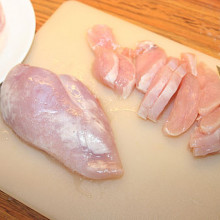
40:42 - How to avoid food poisoning
How to avoid food poisoning
with Professor Paul Wigley, University of Liverpool
The stomach is a biological vat of acid that’s a very effective defence mechanism against infection. But some bugs do get through, and - once in the intestines - can cause the kind of symptoms that most people refer to as “food poisoning”; millions succumb every year. Speaking with Kat Arney, Paul Wigley, infection biologist at Liverpool University about what food poisoning is...
Paul - It can be one of two things. In the real strictest sense, food poisoning is getting a toxin within food usually due to poor storage or poor handling, and this is typically quick onset diarrhea or vomiting but fairly short-lived. With the exception of botulism, which is very serious, these don’t tend to be particularly serious conditions.
But the second, and more serious, is where you have an infection, usually by a bacteria like Salmonella or Campylobacter that can can survive very well the passage through the stomach, colonise the gut, and cause damage within the gut leading to more prolonged, and often more serious - gastroenteritis, diarrhea, vomiting and, in some cases, this can be life threatening.
Kat - So you’ve got the ‘in and out’ kind of food poisoning that’s caused by toxins, so that’s things that have been produced by bacteria, but it’s not the bacteria themselves?
Paul - Not the bacterial themselves. That’s the one I would call the ‘dodgy takeaway’ diarrhea rather than something rather nasty from meat, eggs or…
Kat - So having a rough night and you’re better in the morning! But then, in terms of the bacteria that do get in and set up an infection, how does that happen because the stomach is really acidic, how do they manage to survive and get into our body and cause us harm?
Paul - Well, they’ve got a lot of challenges. The stomach is one of the first ones they have to deal with and the stomach is very acidic. If you think, we have a long tradition of using vinegar - which is about the same acidity as the stomach - to preserve food because it kills bacteria. Now enteric bacteria (those able to infect the gut), have developed mechanisms where they can adapt to acid conditions and they do two things. Firstly they can change the surface of the bacterial cell to make them far less susceptible to the hydrogen ions that cause the acidity. And secondly, they can pump out the hydrogen ions from inside the bacterial cell thereby allowing them to maintain a more neutral pH within bacteria.
Kat - So once they’ve got through our defences like that they go down into the intestine. And just quickly, how do they actually make us ill? How do bacteria in our intestine makes us sick if our intestine’s so full of bacteria anyway?
Paul - Well obviously, the intestine’s full of bacteria so they have to be able to compete against the microbiota that’s already there and usually they have to attach to the side of the intestine. So they usually have projections like flagella or fimbriae, which allow to the enterocyte (the cells of the gut).
There they can do two things - they can produce a toxin, so things like traveler's diarrhea caused by a type of Escherichia Coli - E. Coli is an enterotoxin. But things like Salmonella and Campylobacter tend to cause damage to the cells. They actually inject proteins into the cell, changes their structure and function that leads to inflammation. This causes damage to the gut which is very painful; very uncomfortable and can also lead to diarrhea, fever, and vomiting.
Kat - Oh. You’re giving me flashbacks to when I had a horrendous gut infection a year ago! But we’re getting towards BBQ season, which is a common way that people do end up accidently picking up food poisoning - what should people do to minimise their chances of getting either the toxin-based food poisoning or picking up nasty germs?
Paul - It’s very important to handle the food very well within the kitchen or, indeed, if you’re cooking a BBQ. If you handle food you have your fingers all over it, you’ve got those bacteria on your skin, several of which can produce toxins and cause diarrhea.
Kat - And presumably people not washing their hands after they’ve been to the toilet and things like that?
Paul - Absolutely, yes! I have two children and it was a constant battle when they were younger to get them to do that. But, I guess, the biggest problem where we think of a BBQ bacteria like Campylobacter, which are very prevalent in chicken within the UK, there you really need to make sure that you handle meat with respect. You’ve got to consider that there’s a high chance of chicken having Campylobacter upon it, avoid cross-contamination in the kitchen, and if you’re cooking chicken on the BBQ make sure it’s cooked through; make sure it’s not pink in the middle. And the other thing is don’t wash chicken before cooking it because all you’re going to do is create an aerosol of Campylobacter in your kitchen and two or three days later you could be well regretting that.

46:11 - What is Irritable Bowel Syndrome?
What is Irritable Bowel Syndrome?
with Dr Anthony Hobson - Functional Gut Clinic, London
One problem that afflicts the intestine is Irritable Bowel Syndrome (IBS). Up to 20% of the adults in developed countries are affected by IBS, but what is it? And how can it be treated? April is IBS awareness month so we thought we’d better find out! Chris Smith spoke to clinical scientist Anthony Hobson.
Anthony - IBS is characterised by a set of symptoms. So symptoms like bloating, abdominal pain, altered bowel habit, and really it’s a diagnosis of exclusion. What I mean by that is if you go to your GP with those symptoms, then what he will do is try and exclude a serious cause for those things. Red flag symptoms such as bleeding, weight loss and so forth, and if he’s quite confident these symptoms are not caused by anything more serious, then he will give you a diagnosis of IBS. If you find yourself in secondary care, then that diagnosis of exclusion goes further with things like stool tests, imaging tests, and colonoscopy.
Chris - Tell us a bit about those. So someone comes to you with a set of those symptoms - what sorts of things will you do to them in order to work out what is causing them to have IBS type symptoms?
Anthony - There’s a kind of triage process which a lot of patients should be able to treat their symptoms with self-help. There are lots of good self-help guides out there from places like the IBS Network which can help you to modify your diet for instance, and try and eliminate those things that cause most of your symptoms.
However, some people can’t do that so the next process is to, within those guidelines, is to seek help from a dietician who can help you to modify your diet and treat things in that way.
Chris - So is it usually a change of diet that trigger it then? Or is it that is just comes on in some people, at some point, and then they’ve got to deal with it?
Anthony - It can be like that in terms of people will change their diet. They may go to a different country or they may start eating a different diet - a healthier diet maybe with a lot more fruit and vegetables and that upsets the system, but there are other causes for IBS as well.
Chris - Say this happens to somebody, because I know you said you can get investigated, what sorts of things are you measuring from somebody which will then say yes, we think this is IBS and therefore the right sorts of treatments will be ‘X’ for you?
Anthony - Even before you get to diagnostics tests, the things you can do is try and exclude something. The commonest one is the protein gluten, so people will do a gluten exclusion test, see if they feel better, and then reintroduce it and see if symptoms com back.
Anthony - A similar thing can be done for milk proteins, so if things like beta casein. There are different types of milk proteins so the A1 protein in regular cow's milk can have more of an immunological effect as compared to A2 milk which is from other breeds of cattle, goats and sheep. So there’s simple tests that you can do yourself to try to understand whether your body is digesting things properly.
Chris - I did here one person say that probably what is happening is that some component of the diet, in some way, selects for a cross section or population of microbes and this shifts the whole population - a bit like a bacterial domino effect going off and you upset the applecart and that then causes the symptoms. And actually by withdrawing certain foodstuffs slowly you encourage the microbiome to reset itself.
Anthony - Certainly, as the other speakers alluded to, complex carbohydrates get broken down in the colon. And if you have too many of these or you’re not absorbing these carbohydrates properly, such as fruit sugars or milk sugars, then this can affect the microbiome. By withdrawing those difficult to digest carbohydrates, then you can reset the microbiome and get rid of some of those symptoms.
Chris - One thing that we covered a few weeks ago on the programme was an apparent link between stress and IBS. And people were saying if they make an animal, or take a human who’s stressed who’s got IBS symptoms they can take some of the bacteria from their gut, give them to animals and they can make an animal have IBS, like it’s almost transmissible.
Anthony - The microbiome can release certain neurotransmitters into the lumen and that can affect your mood. The way we look at is there are two types of stress - there’s a physiological stress and there’s a psychological stress, and both have a bidirectional influence on IBS symptoms. So, if there’s a period of inflammation like food poisoning, then this can create a physiological stressor and that can change the local environment and visa versa. If someone is stressed or bereaved then that can also change motility and make the gut more suitable for different types of microbes.
Chris - When you take someone on and help them, what proportion of people do you think, with the sorts of interventions you’ve outlined, you can get better?
Anthony - Again, it’s a triage process. I think many people can deal with these symptoms themselves. If they can’t, then they need testing. One of the things we can test for is if the bacteria has stayed in the small bowel and has started to affect the way people digest food. This is called small intestinal bacterial overgrowth. It can be tested for with a hydrogen breath test and treated with a specific antibiotic but that tends to be done only when you’ve gone through these first stages.
Chris - So you start simple and sort of escalate?
Anthony - Yeah.

51:35 - Why Are Blue Lights Harder to See?
Why Are Blue Lights Harder to See?
Izzie Clarke put this question to George Dobre from the University of Kent.
George - the cells in our eyes that process colour are called cones. It’s easy to remember - cones for colour, and they can be found at the back of our eye called the retina. These cones really detect just three colours - red, green and blue. We then build other colours based roughly on the amount of red, green, and blue the cones report to the brain. However, the blue cones are a small minority: only about 10% of the total.
Izzie - So each cone is set to tell the brain about mainly one of these three colours, but as more cones register red and green light, blue is at a slight disadvantage. But why does blue light appear blurry?
George - To be able to see a tiny dot of colour, like a blue LED in detail, the eye needs to be able to focus that LED light on just a small number of cones. The smaller this area can be, the more detail we can see, but for a blue dot that’s difficult to achieve. The eye automatically adapts to see red and green with the sharpest focus, which leaves the blue unfocused and fuzzy. This is called chromatic aberration.
Izzie - The human eye has evolved towards a compromise. We still see sharp images most of the time, except for when we look at tiny blue dots or lines, and that’s because it’s a relatively rare occurrence in nature. That’s the anatomy of physiology part covered. Come on George - hit me with some physics...
George - The physics part of the answer has a lot in common with the question why is the sky blue? Which also applies to these blue fairy lights being at the short wavelength end of the visible spectrum when blue light hits air molecules it scatters much more than red or green. In contrast, red light at the long wavelength end of the spectrum tends to scatter less continuing along in mostly a straight line, which is why we get red sunsets. The consequence is that blue light is focussed to a spot on the retina that is a little bit bigger than that for red and green.










Comments
Add a comment